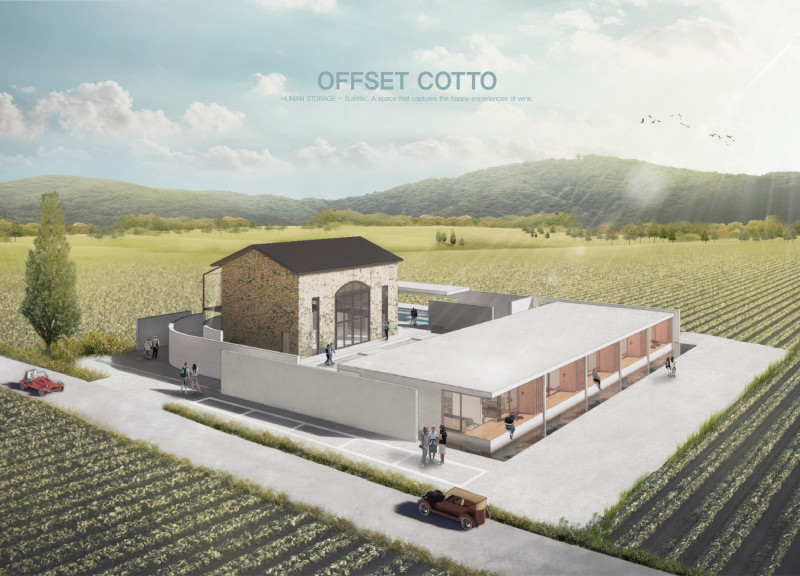5 key facts about this project
OFFSET COTTO is a space designed to capture the enjoyable experiences associated with wine. Located in Peruza, central Italy, it responds to the area's humid subtropical climate, characterized by hot summers and cold winters. The concept revolves around the idea of "HUMAN STORAGE," emphasizing the connection between personal memories, emotions, and the appreciation of wine. Through careful design, previously neglected spaces are transformed into dynamic environments for people to engage and connect.
Design Concept
The concept compares the winemaking process to the project’s aim of filtering out negative experiences. Just as winemakers choose only the best grapes, OFFSET COTTO focuses on creating spaces that enhance positive memories. Each element in the design is intended to evoke warmth and joy, allowing visitors to share in a collective experience that celebrates wine culture.
Guest House and Visitor Experience
At the heart of this space is the Tilibini Guest House. This area serves as a gathering spot for wine tasting and sensory experiences. Unlike traditional guest houses, it encourages visitors to interact and socialize. The open layout creates a welcoming atmosphere where connections can deepen, enhancing the overall enjoyment of wine and community.
Climate Responsive Design
Water features are thoughtfully integrated into the design, serving both aesthetic and functional purposes. They provide cooling effects in the warm climate, creating a comfortable environment for guests. The design includes facades that strategically manage sunlight, allowing for natural light while avoiding overheating. These elements contribute to a sustainable approach, considering both visitor comfort and energy efficiency.
Materiality and Construction
Materials used in OFFSET COTTO include original roof designs, wooden panels, reinforced trusses, a glass greenhouse, a wine cellar, wooden folding doors, and a pond. Each material is selected for its practical use while also enhancing the aesthetic connection to the surrounding landscape. The thoughtful arrangement of these materials creates intimate spaces throughout the layout, inviting moments of reflection and relaxation within the larger context of wine appreciation.
The result is a design that facilitates personal interactions and shared experiences, encouraging a deeper understanding of the cultural significance of wine and the memories it helps create.






















































